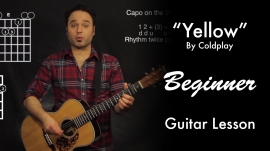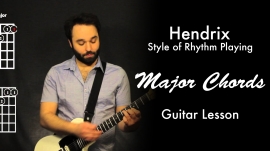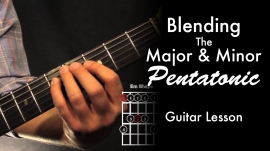Here’s a concrete example of using my broad concept of what Hendrix did over both Major and Minor chords in context. Here I use a I vi ii V (1625) in the key of C. The chord Progression is:
C – Am – Dm – G
I use a 5th string barre chord for my C, a 6th string barre chord for my Am, a 5th string barre chord for the Dm and a 6th string barre chord for the G. This is just one example, you can use the same chord progression, same shapes just experiment with the licks, or switch all the 5th string barre chords to 6th string barre chords and visa versa and use some of the same licks only on different chords. Anyways, a lot to take away from Hendrix and his style of rhythm playing. I doubt this will be the last lesson on using his style of rhythm playing in context. Try this over some of my backing tracks!
-Related Lessons-
0:36 – Transposing (Chords as Numbers)?! | UGT 5/8
1:09 – 6th String Barre Chords | BO 9/10
1:09 – 5th String Barre Chords | BO 10/10
1:32 – Hendrix Style of Rhythm Playing | Major Chords
1:32 – Hendrix Style of Rhythm Playing | Minor Chords
PDF’s
CAGED Arpeggio Shapes, CAGED Chord Shapes, CAGED Scale Shapes, CAGED Pentatonic Scale Shapes & Hendrix 1625 Tab




